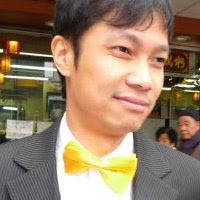News on The Edge
Welcome to the Social Edge update! “Visual thinking is powerful, and as we move into an age of networks and nodes, it appears that mapping our needs, resources, people and even ideas are a powerful way to handle the complexities of social change.” This week’s host, Charles “Hipbone” Cameron, joins forces with Social Edge friend and frequent contributor Dan Bassill of Tutor/Mentor Connection to look into a new space: cognitive planning. How can visual thinking and mapping facilitate your work? Join them to explore new tools and resources. Then welcome Beth Kanter and Allison Fine. Their new book, Networked Nonprofit: Connecting with Social Media to Drive Change, is now being excerpted on Social Edge. It will help you implement the organizational culture changes needed to effectively tap new networks and drive change. Travel to Nairobi where Kiva Fellow Jenny Jin is discovering innovative technology changing East Africa. And venture to India, where Sam Goldman is tracking D.light Design’s impact on school tests results. Speaking of education, Dr. O introduces us to “I Love Schools,” a new hybrid social enterprise with a unique model, while Untangled, stuck in a tech Bermuda Triangle, recommends that you enter the Design for the First World contest. Also seeking solutions to the world’s pressing problems is the Skoll Awards for Social Entrepreneurship. The deadline is August 4, so if you are a social entrepreneur whose work has the potential for large-scale positive change in the areas of tolerance and human rights, health, environmental sustainability, peace and security, institutional responsibility, and economic and social equity, now is the time to apply. Jonathan Lewis has the last word, also on collaboration and solutions: “The poor live and suffer under multi-disciplinary burdens, so multi-disciplinary solutions are required. Poverty is a collaborative problem that needs collaborative solutions.”
Join this Week's Live Discussions  Maps, Mapping and What's Possible Maps, Mapping and What's Possible
As we move into an age of networks, visual thinking and mapping are becoming powerful ways to handle the complexities of social change. Charles “Hipbone” Cameron finds out how this can facilitate your work.
How to Build a Board
Each organization has its own unique Board configuration, but you should strive for diversity of perspectives and networks, says Andrée Sosler, Executive Director of the Darfur Stoves Project. Check her advice and get on the conversation! Can Social Enterprises be Too Commercial?
Are there any corporate traits that should be avoided in social entrepreneurship? Or do you agree with Rod Schwartz that there is nothing harmful in operating to the best standards of commercial behaviour? Survival Tips for Social Enterprises
To survive the economic downturn, stop looking in the rear-view mirror. Focus instead on the future by finding innovative ways to support your organization’s mission. Check John Gillepsie’s survival tips! The Silence of the Churches
Why do social entrepreneurs rarely mention their spiritual values and moral underpinnings? Is there an unspoken taboo preventing the sharing of personal beliefs? Join Paul Lamb, a Man in a Mission, in the conversation. It doesn't take an MBA - or does it?
Liberal arts students are passionate about their contribution to the world while business-school students leverage their skills to create financial success. Where do social entrepreneurs fit? Charles (Hipbone) Cameron tries to configure the best of both worlds.
Do you have suggestions for Social Edge or for this newsletter? Send us feedback. You can remove yourself from this list at any time. Hope to see you on The Edge and on Twitter @socialedge! Victor d’Allant
Executive Director, Social Edge
250 University Avenue
Palo Alto, CA 94301 |  "When you do the common things in life in an uncommon way, you will command the attention of the world." George Washington CarverWhat is Social Entrepreneurship?Statement of Faith
"When you do the common things in life in an uncommon way, you will command the attention of the world." George Washington CarverWhat is Social Entrepreneurship?Statement of Faith


0 Comments:
Post a Comment
<< Home